A talended Chinese astronomer from Guangdong province
He decided to become an astronomer as a young child. The vision of a bright comet
fascinated him, but 5 years passed until he realized what he had really seen.
The thrill of discoveries attracted him and he did not wait long for them.
Professionals noticed his talent after developing a weather forecast model
and offered him cooperation. He paid back their trust by a new discovery soon.
He has consistently been following his childhood dream for 20 years,
still waiting for his doctorate degree, in fact he has already acted as
a professional for many years. The discoverer of Comet Lulin,
Quanzhi Ye.
How did you become interested in astronomy?
It was a little bit a strange story if I remember well. My parents bought a
series of books called "the Great Britain Encyclopedia" when I was six.
One day I happened to pick up one of them (the "Earth Science" volume) and
read the chapter about astronomy. "Oh, these contents are cool!" I thought,
so I read the chapter again and again and decided to become an astronomer.
A few months later my parents and I went out for a walk, we noticed the numerous
stars above. "You said you had studied astronomy with that Encyclopedia," my Dad
said, "why don't you try to spot a few constellations now?" So I spotted Orion.
This very first observiation experience further evoked my interest in astronomy.
Later that year Dad bought me a telescope - a single-lens, 6cm f/15 refractor.
In today's standard it was of a horrible viewing quality, but the first telescope
of amateur astronomers is always invaluable.
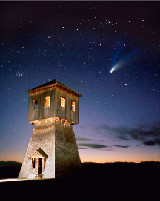
The next important experience - and probably one of the most dramatic stories –
has been the independent discovery of Comet Hale-Bopp. Certainly that comet
was bright enough to be discovered by many people at the time I spotted it.
It was in July of 1996 when I "surveyed" the sky as usual, I noticed a strange
fuzzy ball somewhere high in the southern sky. I didn't know about Comet Hale-Bopp
at that time - the Internet service in China was still far from popular,
and I was almost isolated from the astronomy societies besides an old sky map and
a few old magazines.
Neither did I know enough deep-sky objects to verify whether
it was a comet or not. Honestly speaking, I didn't know what was it, but I just
had a feeling it was strange - especially, when I managed to find it again a day later,
it seemed to have moved away a little bit. It was not until the year 2001 when I had
enough knowledge to confirm that it was indeed the Comet Hale-Bopp that I had spotted.
And amazingly, I eventually credited my own comet exactly 11 years later in July, 2007 (Comet Lulin).
So you were captured by astronomy at a very early age and you started to observe meteors.
Why meteors?
Although observation of meteors is simple you can achieve valuable scientific information.
It does not require very powerful telescopes and to begin the observation is easy -
and needless to say the predicted Leonid storms in 1998-2002 was great interest-boost.
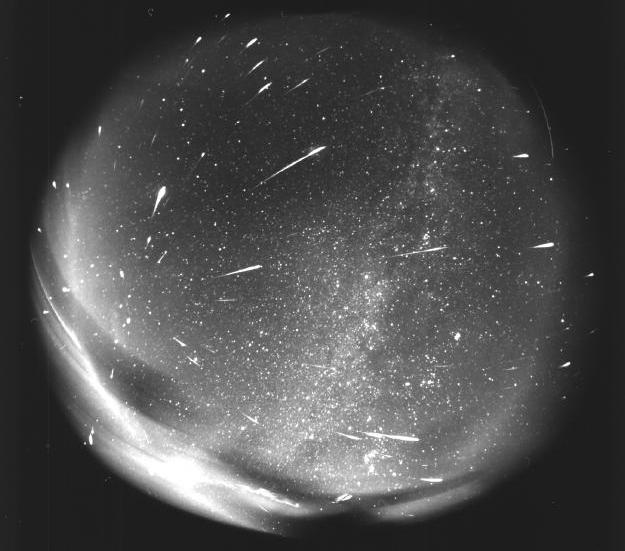
Since 1997 you have regularly written for the Chinese amateur astronomy magazine
Tianwen Aihaozhe (Amateur Astronomer). What can a 9-year-old child write about?
My first write-up actually was not published at the end, it was a review of solar
system exploration. I spent weeks on visiting libraries and read all the material
I could find. Apart from all the new knowledge, I also learned something very important:
don't be shy on trying more difficult things, you always have a chance to succeed,
and even if you fail, you get experience which is still valuable. Such attitude helped
me to earn a lot of things later, from cooperation with Lulin Observatory to the publication
of my first scientific article.
At the age of 15 you entered the national round of Astronomy Olympiad and you qualified yourself
into the Chinese National Team for VIII th International Astronomy Olympiad, held in Stockholm
in 2003. Was it hard to become a member of this team?
I was in fact quite lucky that year for qualifying into the national team. I wasn't
terribly good at mathematics and physics at that time, but I got full marks in the
questions about observations, as those are the things I am very interested in.
How do you remember your first trip abroad?
It was terrific, to see the world with my own eyes, and I made a lot of new friends there.
The draw back was the bad cold since I was too confident about handling
jet lag and not ready for the cold Scandinavian weather. I just visited Scandinavia
this year, and this time I went there for a conference on astronomy. To be honest
I was thrilled that after 11 years I could visit the same country again because of astronomy
but now as an astronomy PhD student!
Two years later, the Xth Astronomical Olympiad was held in Beijing, which you attended
not as a competitor, but you supported the organizing team. At that time,
you were hunting for SOHO comets and for asteroids from archival images.
Starting SkyMorph search was an important milestone in your career. How did you learn about it?
Firstly I need to introduce a notable figure, Mr. Zhou Xing-Ming, who is respected
as a giant in Chinese amateur astronomy. Old SOHO comet hunters should know him.
He was a meteorologist in Xinjiang, China, and had spent numerous time in visual
comet hunting since 1980´s. He was very close to a real discovery several times,
but was beaten by non-ideal communicational conditions, it is a pity that he
had never credited a comet, although his efforts were recognized by CBAT. He was also
the first person to try SOHO and then SkyMorph in China and introduced them to other
Chinese amateur astronomers (including me). Sadly, Zhou died in a traffic accident in
August 2004, before getting his first SkyMorph discovery.
Some months later, Zhou's close friend, Gao Xing (who is now operating the Xingming
Observatory that is named after Zhou and have found some new comets and novas),
asked me if I would be interested in taking over Zhou's legacy and try to find
something in SkyMorph. Many other amateurs had already denied due to the language
barrier and failed to make a breakthrough.
The decision to work in SkyMorph was very, very important for me. As mentioned above,
my childhood dream is to become a professional astronomer, but I didn't find a way
to work in it - there are very few undergraduate astronomy programmes in China,
and admission to them is „deadly" competitive. However, starting with SkyMorph,
I eventually found another path to professional astronomy - first SkyMorph, then
a small research programme at Lulin (named „Lulin Sky Survey" which was supported by
National Central University in Taiwan), furthermore, a few publications in academic journals,
and finally a university study programme in astronomy. I still haven't reached my goal yet,
but at least I think I am edging closer.
You took „the baton“ after Xin-Ming, and soon came your first discoveries -
7 SOHO comets and nearly a hundred new asteroids from the archive. How much
time did you dedicate to search?
At that time I was still a high school student spending 14 hours a day and six days
a week at school as many other Chinese high school students, but I still spent a
considerable amount of time on Sundays on SkyMorph. I would like to pay my gratitude
to Marco Langbroek and Rob Matson, they helped me massively on getting start on SkyMorph
search. Marco has an excellent introductory write-up on how to search in SkyMorph;
Rob patiently helped me understand a lot of key concepts which are some times quite scary for a high school student,
but finally led to discovery of my first asteroid.
Thanks to your work with SkyMorph you have learned the basics of astrometry,
as well as the process of discovery. Since March 2006 you started your research
project with Taiwanese Lulin Observatory. It was a step up to a higher level,
beginning of asteroid and comet hunt in a real time. How did this collaboration start?
This is one of the stories I love to tell. I am still surprised by the way I got to it
- at that time, I had already had a great time with SkyMorph and felt I could probably
do something more, but I didn't have the resource to conduct asteroid/comet search.
I tried to contact some professional/amateur astronomers who would probably have interest
for collaboration, but I didn't get any luck.
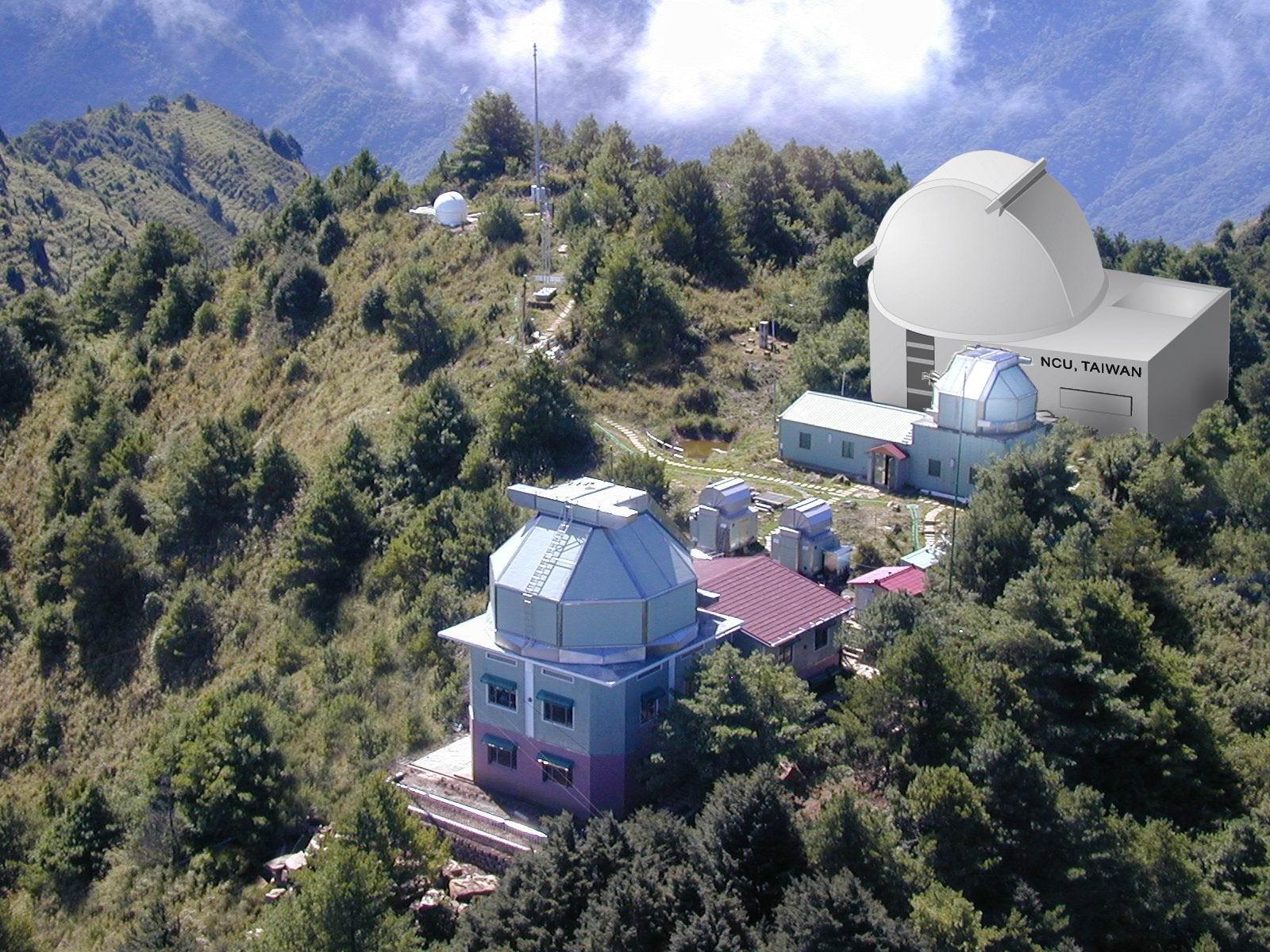
So some time in late Febuary 2006, I got an email from Mr. Hung-Chin Lin, director of
the Lulin Observatory. He was interested in 7timer!,
a numeric weather product I developed for
astronomers, which I had been developing since 2005 and would like
to use it for Lulin. I heard of Lulin - in fact, I probably knew almost every observatory
in East Asia as I wanted to know who to „approach“' - but I never contacted Lulin as it
is associated to the National Central University Taiwan (NCU) and I thought they would probably
have a lot of observational projects.
However, I still decided to make a try: I recovered three asteroids discovered by Lulin
in 2002 in SkyMorph. These three asteroids were only observed in one apparition, so they
were considered „lost" at that time. So I replied Mr. Lin and told him what I had done
for the three Lulin asteroids, then asked him if there was something I could do for them.
Mr. Lin looked very impressed by my work and told me they indeed had some spare time on
a 16-inch telescope, so that is how the cooperation got started. Every time I recall
this story I feel very indebted to Mr. Lin and all the NCU astronomers (who gave me help afterwards),
they provided me a crucial initial „kick“ to send me into the orbit of astronomers!
Tell us little bit more about 7timer!
I have been interested in meteorology for a long time, initially in the hope of
improving my chances of doing more fruitful astronomical observations (you must agree
that it is very frustrating to drive 200 km and find out it is cloudy). Atilla Danko's
Clear Sky Clock (now Clear Sky Chart) was also a wonder to me, but it only works in
North America, so I had been dreaming for something equivalent for the rest of the world.
It was in the summer break and I found myself having some time to dig into those numerical
models. It didn't take long for me to set up something that could routinely grab a numerical
product from National Oceanic and Atmospheric
Administration (NOAA), analyze it and report what the odds for a good weather would be in the next
few days. I got a valuable support from the National Astronomical Observatories of China
so that I could put the whole programme online and let it run 24-7.
Although you have discovered many asteroids from archive, only after discoveries
from Lulin Sky Survey you could propose to name an steroid. How did you choose
the name of the first one?
Oh, it is quite a protocol. The folks at National Central University proposed to name
it „Lulin", after the site that found this asteroid, and I think it is a very good idea.
I named my „truly" first one after my high school to acknowledge the school for giving
me a relaxing environment to do the things I enjoy.
When there were more discoveries from LUSS, you offered the public to propose a name for
some of the them. How did you come to this idea?
Because I don't think that I should keep the credit to myself - the asteroids have already
been there for 4.5 billion years and I am even not the first human who has seen them
(due to the protocol adopted by the Minor Planet Center), so why not to share the fun with others?
The Planetary Society has given the so-called Gene Shoemaker Near-Earth Object Grants for
NEO searching projects since 1997. In 2007 you were awarded with 2000 USD for the purchase
of a laptop and software to improve your set up in LUSS project as the youngest recipient.
Did you believe that you could succeed with your application?
I really had no idea whether I could win that grant, I just felt it was worth trying.
In my opinion many things in our life are pretty much like astronomy: we don't have belief
in what things we can get, but they are just worth trying. We enjoy the process, and at
the end we may indeed gain something. The funny thing is that the laptop I bought with the grant
- an IBM ThinkPad - is still in service after almost 8 years, I am still doing almost all my research with it.
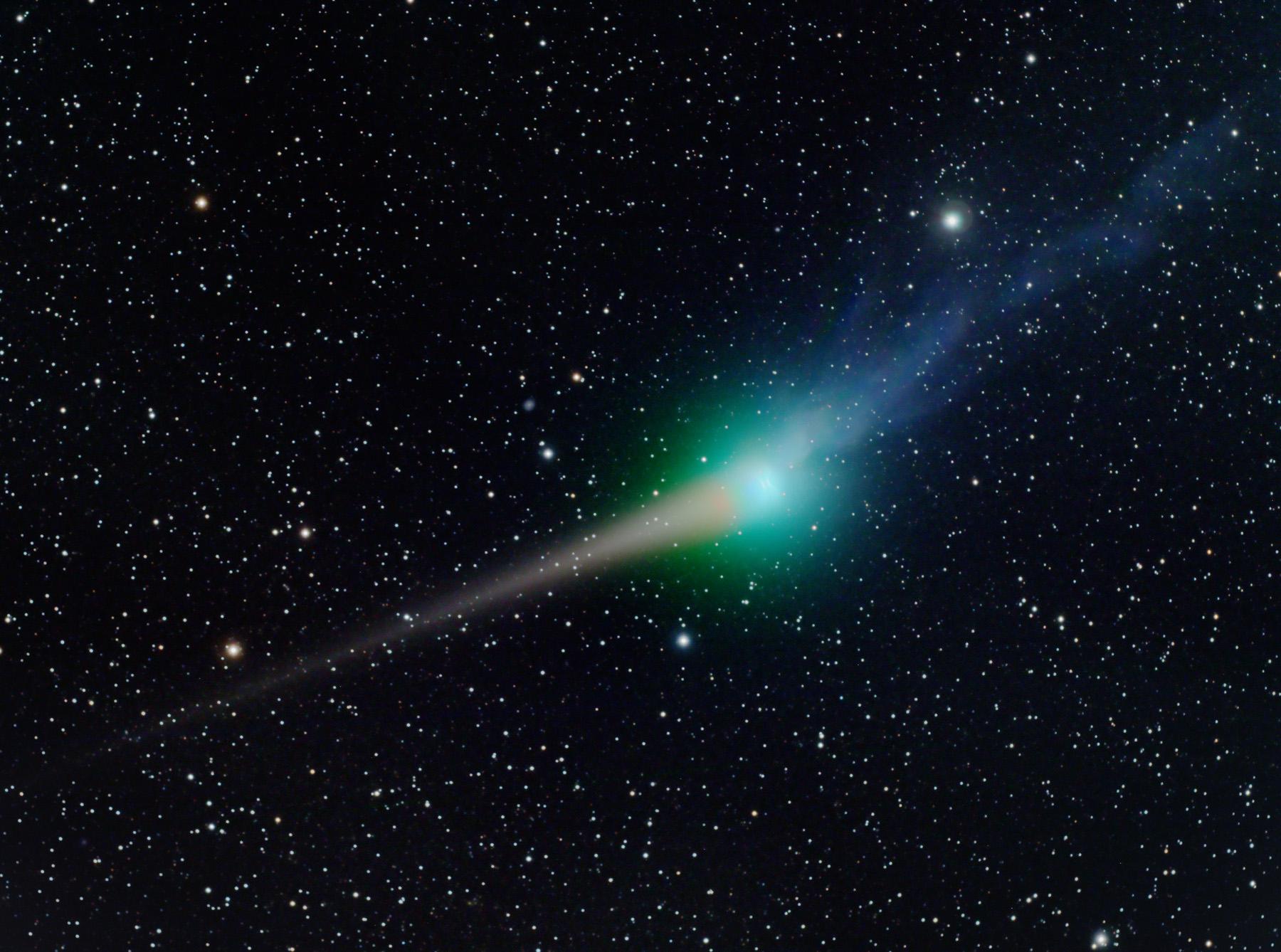
On 2007 July 11, only three months after recieving the grant you discovered the comet
C/2007 N3 (Lulin), which you initially considered for an asteroid. Fortunately after a
week it showed a small coma. Your childhood dream came true. How do you remember that moment?
Haha, I have a bad habit: dream for something for a long time and be thrilled in the dreams,
and when it really comes, I am just very calm. On the other hand it is a good thing:
the happiness is not intense but lasts longer. I checked my diary about the discovery
of Lulin and I could see things like this: „Huh, so is it a comet? Not a bad news at all."
But in 2009, when the comet came close to the Earth, I was holding a special celebration for it:
I kept my long hair and called it „Lulin's tail“ (I tried to mime Lulin's tail with it, but since
Lulin has two opposite tails, you can guess the way I looked...)
The year 2007 was very exceptional for you - you were a NEO grant winner, discovered
a new comet and visited the Siding Spring Observatory in Australia, where you met Rob McNaught,
the most successful comet hunter of all time. How did you get there?
I was visiting my relatives in Australia and Rob kindly agreed to take me to visit the observatory.
I was very, very excited. I had known Rob since the 5th grade when I was reading
his Leonid storm prediction and that was back to 1999.
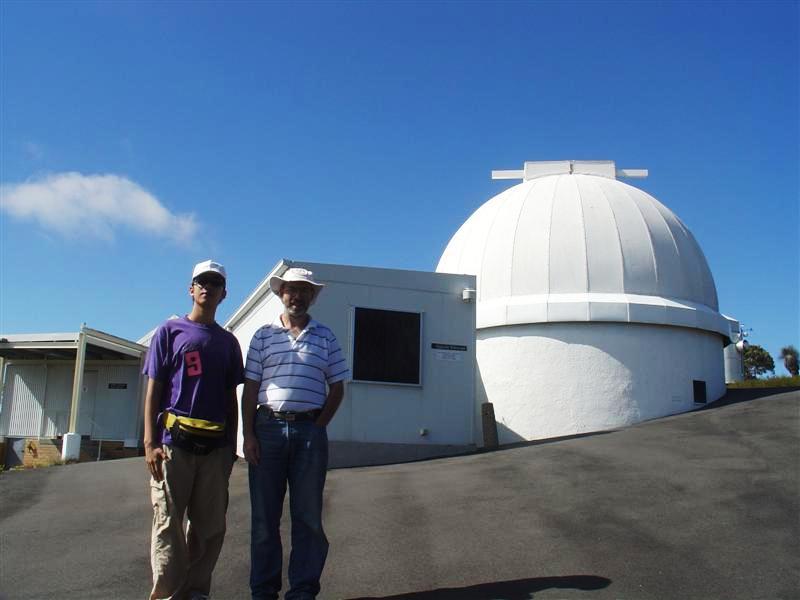
Did Rob reveal his secret how to be succesful in comet discovery?
Well, yes. He told me to keep patiently searching and I would discover more comets.
lthough I haven't managed to find another comet, I keep his words in mind – being patient
is the key to do great things.
Your succesful year 2007 should not have ended up by Siding Spring visit – in December
you could have had the second comet on your account. As it turned out, you had been
observing the comet P/2008 Y3 (McNaught), Rob's Nr. 45 discovery a whole one year
before he caught it. How do you remember it?
I think I had looked at the pre-discovery data again and I would say it was a fair miss
- it didn't look like cometary at that time. I was a bit sad, but Rob's a great comet hunter!
Let us move into 2009. After three years the Lulin Sky Survey was brought to an end. What was the reason?
Both NCU and I decided it was time to move on. I enjoyed the time on surveying the sky very much,
but I realized that there was much more to explore, such as photometry of asteroids. I have a good
relation with the NCU/Lulin folks after the termination of LUSS, and in fact later their data helped
me to write my first scientific article, which is another step for me to professional career.
In fall 2009 you were invited to the annual meeting of the American Astronomical Society,
Division of Planetary Sciences in Puerto Rico. There you introduced the LUSS project and
met many renown astronomers. Who made the biggest impression on you?
Honestly I had a "cultural shock" at the meeting as it was my first time to see so many big-name
scientists together, and honestly I didn't even know where to place my hands! One of the biggest
moments for me might be seeing Richard Kowalski (astronomer at Catalina Sky Survey, discoverer
of 2008 TC3) holding a piece of the 2008 TC3 meteorite at an invited talk.
Think about it! The species of a small planet who did not even exist 500 thousand years ago can now observe a tiny piece of rock beyond the planet, calculate its trajectory and predict its impact, recover its remnant, and get a glimpse of the universe's distant past by doing all kinds of savvy stuff on it, and I am so fortunate to have seen the smartest person on the planet holding that little alien rock and talking about the newest recoveries. That was just incredible.
At the time you belonged to the "big name" as well. As you mentioned, Marco Langbroek and Rob Matson
helped you with SkyMorph search, but apparently there were also others who inspired and advised you ...
There are lots of people I need to thank! I am sorry that I can just name a few here. Jin Zhu
- who was the team leader when I flew to Stockholm as a Chinese team member for the International
Astronomy Olympiad and continuously supported me in my academic exploration for years; Gao Xing,
the close friend of Zhou Xing-Ming who "gave me the key" to SkyMorph; Hung-Chin Lin together with
the Lulin crew and Cui Chenzhou, who gave me various and indispensable help on my operation of the
Lulin Sky Survey; Alan Harris, Tim Spahr and Eric Christensen, who helped me a lot and advised on
how to get into the professional world. Finally I need to thank my parents. Although they are not
astronomers, they supported my hobby all the time and were always the first people to share my happiness
on every progress.
A year after graduating from Sun Yat-sen University in 2010 you pursued your PhD study at University
of Western Ontario in London, Canada. How did you manage to get to study there?
The story is amazing. Before starting doing asteroids, I had been a long-term meteor observer. In fact,
since 1999 I had been in charge for a website that reported news about comets and meteors in Chinese.
I did fewer meteor work after getting into the asteroid world, but I did still keep writing meteor news
on that website. In 2010 I got my Bachelor's degree and started applying for a grad position. Prof. Peter Brown,
who heads the planetary sciences programme at Western, noted my papers about asteroids and kindly offered
me a position. I find it quite funny because it seems that the history is just repeating itself and I
found myself doing meteors again. Of course, meteors and asteroids (and comets) are closely related.
For Master's project I was doing purely meteors (analysis of the Draconid outburst in 2011/2). Now I am
trying to wrap-up all the things I have been doing over these years and studying the relation between asteroids, comets and meteors.
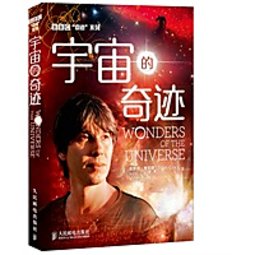 In addition to your study you managed to translate a great book „Wonders of the Universe“ by a popular British physicist Brian Cox into Chinese. It assumes to master the English language. As a non-English native speaker did you have problems in communication after your arrival to Canada?
In addition to your study you managed to translate a great book „Wonders of the Universe“ by a popular British physicist Brian Cox into Chinese. It assumes to master the English language. As a non-English native speaker did you have problems in communication after your arrival to Canada?
Oh yes. I think this is a problem for (almost) every new comer. I practiced English a lot while in China so it wasn't as bad as some may find, but I did have a fight getting used to the environment.
China is the third country which sent their own people into space and the next Chinese goal is to send taiconauts to the Moon. Do you follow the Chinese space programme?
Oh, of course. I must say I am thrilled to see the success! I occasionally write blogs for outreach, covering many space exploration projects including Chang'e 3 and the Yutu rover. I have spoken to a few scientists behind the scene and they like those blogs. I have also written one for the Planetary Society, introducing the outreach effort taking place in China in support of space exploration.
What about walking on the Moon and take a look at stars from there?
Hahahaha, that's a bit too good to be true. But even if I can't do it, I will definitely tell my son or grandson to fulfill it, and my great-grandson if I can live that long. But I really hope that day is not far from now.
Do you have a favourite quote?
I have one. Although it does not have an astronomy relation, I think it is well-suited for astronomers. Sir George Mallory, who was the pioneer on climbing Mount Everest and eventually died on the attempt in 1924, was once asked about "Why to climb Mount Everest?". He had a simple, probably unmindful, but absolutely brilliant reply: "Because it is there." I love to use this quote while answering others on "Why you love astronomy?".
Mallory explained his answer by these words: "The first question you will ask and which I must try to answer is this, 'what is the use of climbing Mount Everest?' and my answer at once must be, 'It is no use'. There is not the slightest prospect of any gain whatsoever. ... So, if you cannot understand that there is something in man which responds to the challenge of this mountain and goes out to meet it, that the struggle is the struggle of life itself upward and forever upward, then you won't see why we go. What we get from this adventure is just sheer joy."
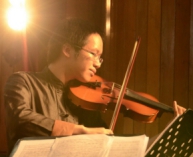
Besides astronomy you also have passion for music, you can play on several musical instruments.
You are even a member of the London Community Orchestra as a violinist. I reckon that playing
the violin is also sheer joy for you. What is more relaxing - view of the starry sky or playing the music ?
I wouldn't try to differentiate them - they are both relaxing in their own way, but occasionally I am wondering why music, or the starry sky - such great things can exist side by side. It is really amazing that we are living on this vivid planet and are able to understand both, isn´t it?
If everything goes right, you should get your PhD before 2017. Where do you see yourself in 10 years from now? Still meteor research?
Oh, just doing one field would be a bit too boring, the sky is so huge. In fact, my PhD thesis is not just about meteor research, I am trying to explore the connection of meteors to demising comets - the comets that used up all their volatiles or simply disintegrate - to look into the evolution of comets. I have always liked exploring new things. I am getting bits on atmospheric dynamics, archaeo-astronomy and stellar astronomy as well. 10 years are long for a soul, but I am sure I will be doing the things I love.

